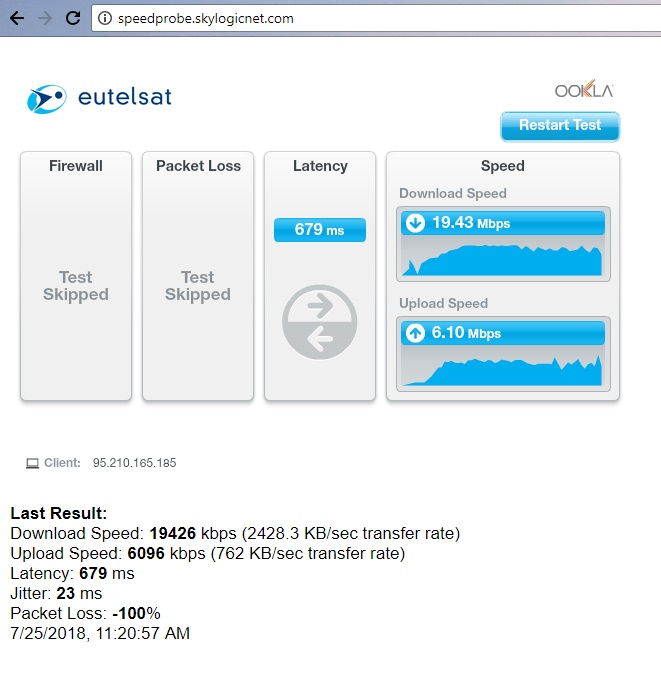Post by SandFish on Jul 28th, 2018 at 10:19am
I'm having trouble peaking up my Tooway system. My reseller is unresponsive to emails and phone calls, so I'm on my own.
I'm on an island in the Adriatic, in the centre of Blue 1. From installation I've had a maximum of 13.5dB, but recently this has dropped. I did a re swing of the dish and the best I can now receive is 10.5dB.
I found when I was up the ladder the the earth lead has disintegrated in the high UV here. Can that cause TRIA problems?
There are lots of mention of Peaking up but no descriptions of how to do it. I don't have a meter, so use the TRIA tones with a portable wifi device showing the INSTALL page readings to help and very small changes to the bolts, but still can't get above 10.5.
I don't know why the RX SNR has changed. Any advice would be appreciated.
 modem_status.jpg (Attachment deleted | 49
)
modem_status.jpg (Attachment deleted | 49
) earth.JPG (Attachment deleted | 34
)
earth.JPG (Attachment deleted | 34
)
 Tooway_Sat_test.jpg (93 KB | 502
)
Tooway_Sat_test.jpg (93 KB | 502
)
 tria.JPG (70 KB | 475
)
tria.JPG (70 KB | 475
)
I'm on an island in the Adriatic, in the centre of Blue 1. From installation I've had a maximum of 13.5dB, but recently this has dropped. I did a re swing of the dish and the best I can now receive is 10.5dB.
I found when I was up the ladder the the earth lead has disintegrated in the high UV here. Can that cause TRIA problems?
There are lots of mention of Peaking up but no descriptions of how to do it. I don't have a meter, so use the TRIA tones with a portable wifi device showing the INSTALL page readings to help and very small changes to the bolts, but still can't get above 10.5.
I don't know why the RX SNR has changed. Any advice would be appreciated.
 modem_status.jpg (Attachment deleted | 49
)
modem_status.jpg (Attachment deleted | 49
) earth.JPG (Attachment deleted | 34
)
earth.JPG (Attachment deleted | 34
) Tooway_Sat_test.jpg (93 KB | 502
)
Tooway_Sat_test.jpg (93 KB | 502
) tria.JPG (70 KB | 475
)
tria.JPG (70 KB | 475
)